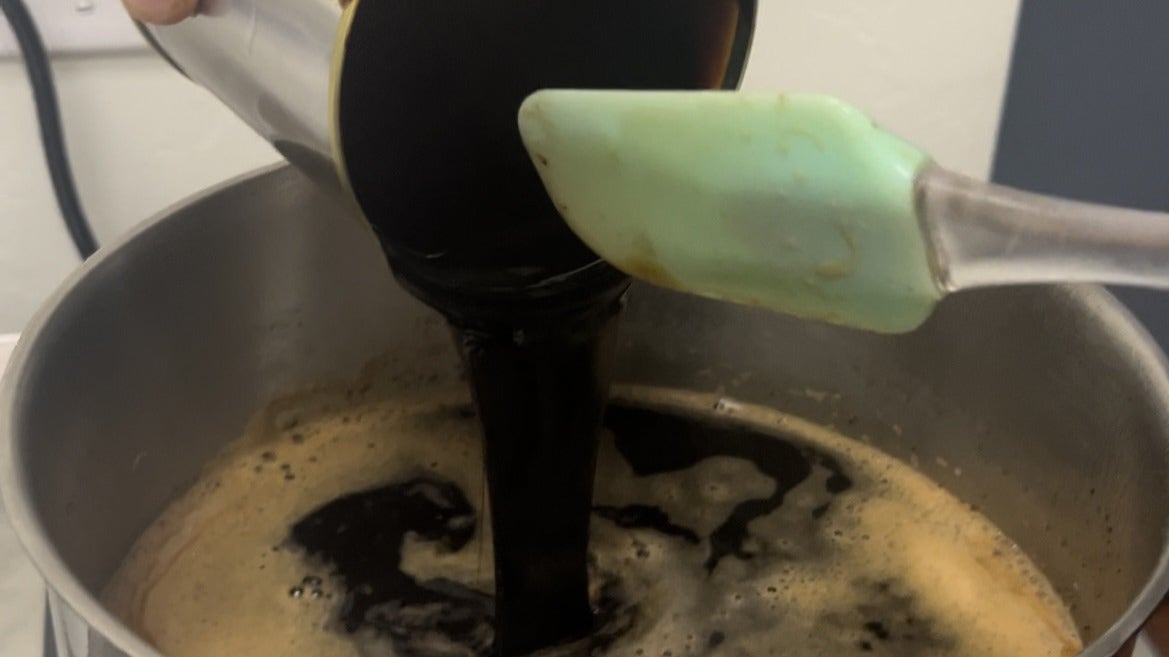When I joined Mr. Beer, I wanted to dive into homebrewing—really get involved. I wanted to learn the process and understand the craft so I’d know who our audience really was. Plus, it’s a fun and fascinating hobby that blends chemistry and art—and of course, beer! What’s not to love?
When I thought about brewing my own recipe and engaging with our audience, well, the choice was simple… Enter the Irish Cream Porter, my personal recipe brought to life with the expertise of our Brew Master, Zach.
This brewing session wasn’t just about following steps; it was about taking an idea and turning it into something delicious—or, at least, drinkable! With Zach guiding me through the finer points of the process, we prepped the fermenter, crafted the wort, and set everything in motion. Here’s how it went, from sanitization to fermentation.
Step 1: Sanitizing Like a Pro
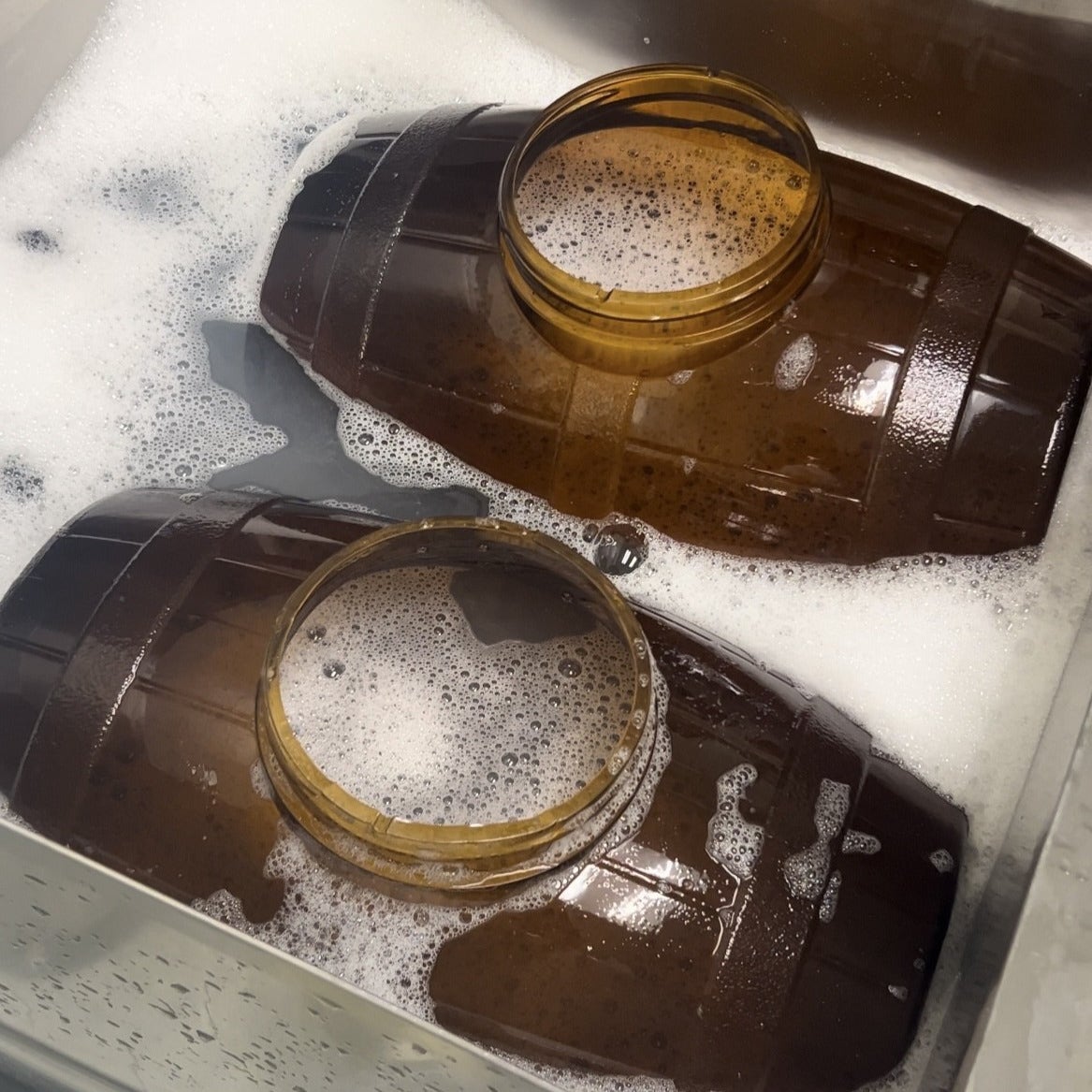
There’s one thing Zach drilled into me: sanitizing isn’t just a step in brewing—it’s a way of life. That's not an exaggeration. He wasn’t kidding about its importance. Proper sanitization ensures that your beer stays free of unwanted bacteria or wild yeast, preserving the flavors you worked so hard to create.
We’re lucky enough to have industrial sinks, which means we can fully immerse our kegs in sanitizing water—making the process quick and thorough (as you can see in the pictures). But if you’re brewing at home, no worries—the process is just as effective with a simple soak and swirl.
Start by filling your fermenter with warm water up to the “line 1” mark and adding ½ of the No-Rinse Cleanser packet. Give your keg a quick swirl to coat the inside with sanitized water, then let it sit for a couple of minutes. Zach’s pro tip? Don’t forget the spigot! Running the solution through it for about five seconds ensures no nasties are lurking there.
Step 2: Brewing the Beer
Brew Master Tip:
Before you get started, we like to drop our extract can in warm water to loosen up the malt extract. It’s thick, syrupy, and stubborn when cold, so warming it up makes it much easier to pour when the time comes.
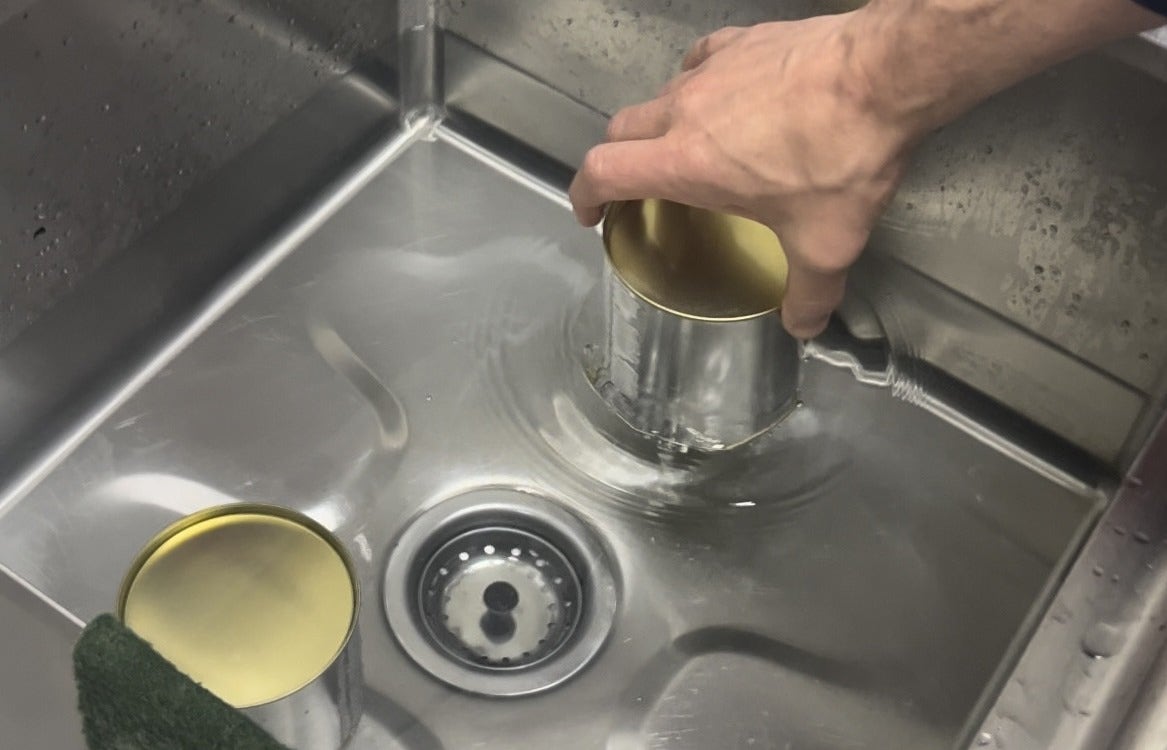
The Grain Steep
The Irish Cream Porter recipe calls for a blend of specialty grains that give it depth and character:
- 4 oz Caramel/Crystal Malt 60L
- 2 oz Chocolate Malt
- 1 oz Black Malt
- 2 oz Flaked Oats
I loaded the grains into a muslin hop sack and tied it securely. It reminded me of making tea, except this “tea” would eventually become beer. We heated 8 cups of water to 155°F (68°C) and steeped the sack for 30 minutes. As the grains steeped, the kitchen filled with a warm, toasty aroma that had me dreaming of how the final product would taste.
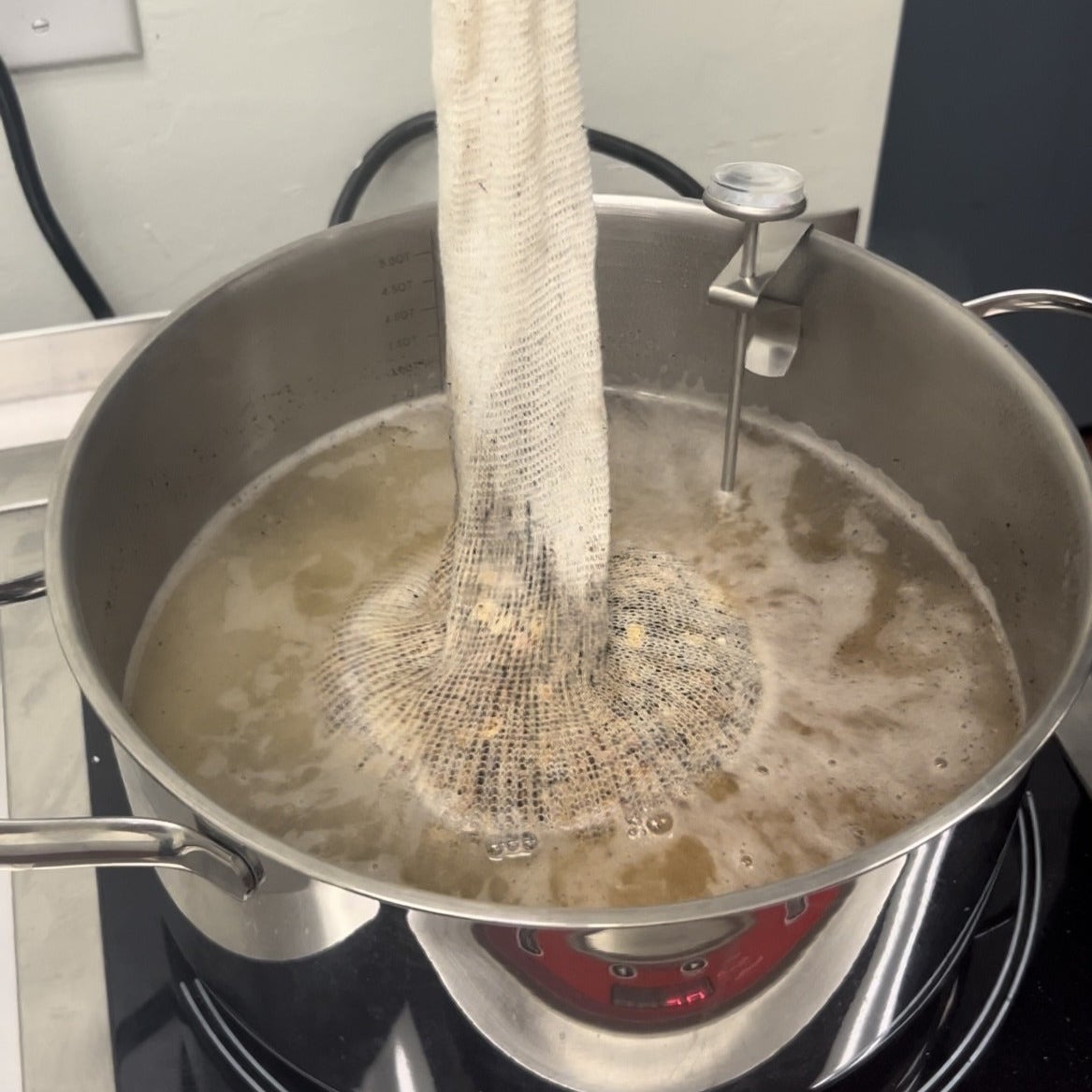

When the timer went off, we carefully removed the sack, letting it drain into the pot without squeezing. As seen in the pictures, we placed it in a mesh strainer to let gravity do its thing. Zach explained that while it might be tempting to squeeze out every drop, doing so could release tannins, which might add unwanted bitterness to the final product. So, patience was key—we let it drain naturally, disposed of the sack and its contents, and moved on to the next step.
The Cocoa and Malt Extract
With the steeped liquid ready, we brought it to a gentle boil and added one tablespoon of unsweetened cocoa powder—an optional ingredient that gives this porter a subtle chocolatey note. I’m a sucker for bold, rich flavors, so this was a no-brainer for me.
After five minutes, we removed the pot from the heat and added the American Porter HME (Hopped Malt Extract). Watching the thick, syrupy malt extract dissolve into the liquid was oddly satisfying. We also stirred in 4 oz of Lactose Sugar, the ingredient that gives the Irish Cream Porter its smooth, creamy mouthfeel.
Step 3: Building the Wort
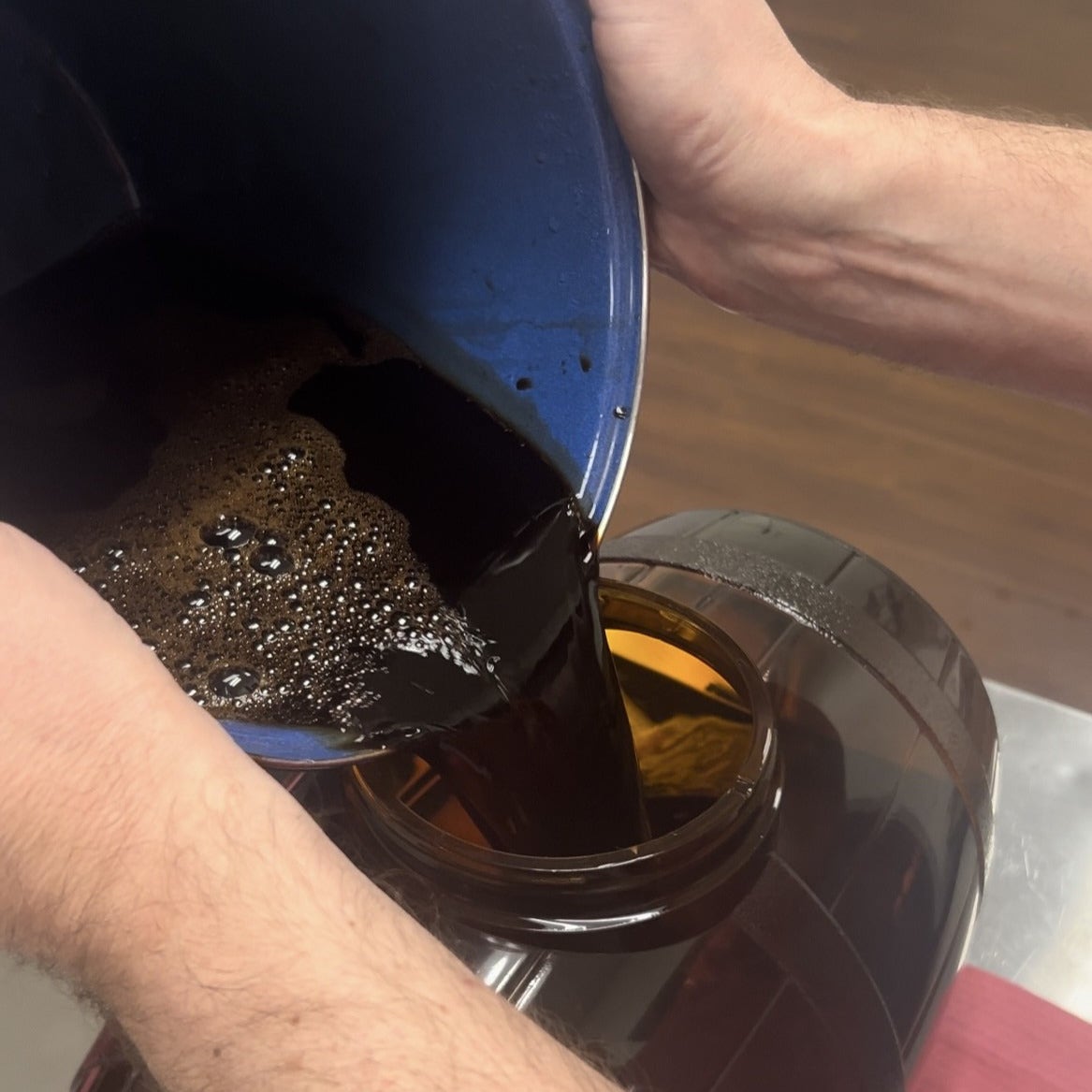
With the wort (unfermented beer) ready, we moved on to assembling everything in the fermenter. We filled the sanitized fermenter with cold water up to the “line 1” mark (approximately 1 gallon), then carefully poured in the hot wort. Watching the dark, rich liquid mix with the cold water was like seeing the beginnings of something truly special.
Step 4: Aerating and Adding Yeast
With the wort ready, it was time to add the yeast—arguably the most important step in turning our sugary liquid into beer. Now, here’s a crucial lesson from Zach: do not stir the yeast in. Just sprinkle the yeast on top, close the fermenter, and let nature take over.
Reflections and Expectations
The Irish Cream Porter is now in its fermentation phase, where the yeast will work its magic over the next 21 days. Zach warned me that the first few days might get lively, with bubbles and foam (krausen) forming on the surface. It’s all part of the process.
Stay Tuned
This is just the beginning. In the next article, we’ll cover bottling, carbonation, and—most importantly—tasting the Irish Cream Porter. Will it live up to my expectations? Will it inspire a resurgence of porters and brown ales? Only time (and fermentation) will tell.
Let’s Brew Something Bold!
If you’re ready to bring back the bold flavors of porters and brown ales, head over to mrbeer.com to grab your brewing kit and ingredients. Don’t forget to share your brewing stories with us—we’d love to hear from you! Your comments help us answer questions and see where we might need to explain things better, so let’s make this a conversation. Whether it’s feedback, questions, or just a brewing success story, drop us a comment—we’re all in this together!
Cheers to brewing adventures,
Matt

